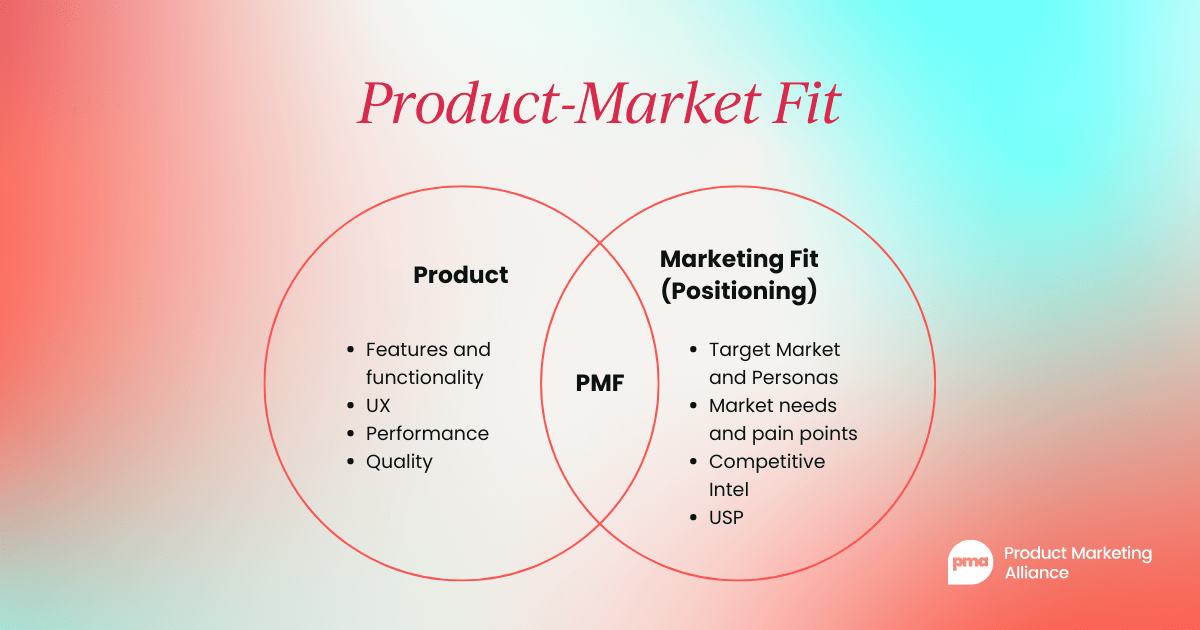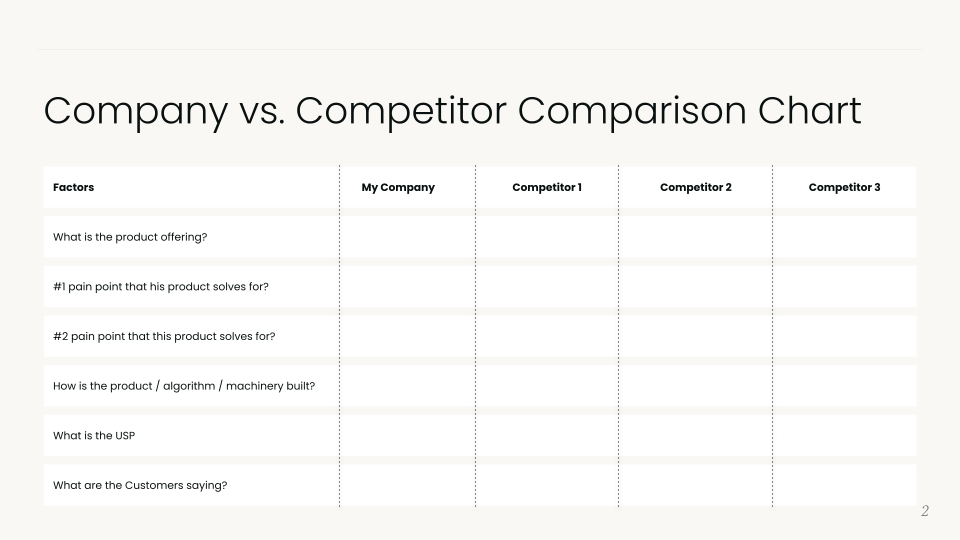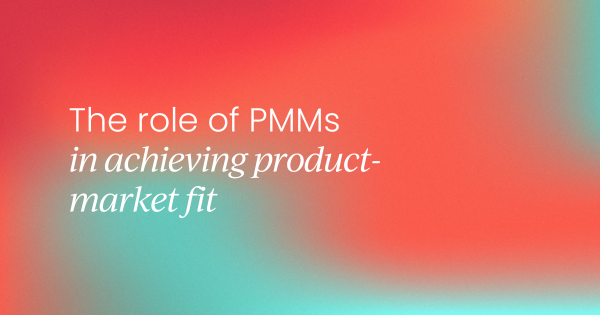When I first stepped into product marketing, I grappled with demystifying product-market fit (PMF). How do we measure success? How can we truly know we've reached that elusive PMF?
Fast forward to today's AI era, where 'AI' has become more of a roar than a buzzword—we're still navigating those same PMF questions, but now at warp speed.
It's tempting to fixate on AI features and functionality. However, despite the new tech landscape, the fundamentals of finding PMF remain unchanged. It's about applying legacy tactics to cutting-edge innovations without losing sight of real market needs.
In this article, I'll explore key strategies for finding PMF for AI products, focusing on the interplay between positioning and competitive intelligence, and the importance of continuous evolution in the AI landscape.
Balancing the Yin of Product with the Yang of Positioning
In the quest for product-market fit for AI solutions, it's crucial to cut through the noise and focus on what truly matters.
The challenge lies in adapting our mindset and processes to this new pace without losing sight of fundamental PMF principles. At the heart of this accelerated journey lies a critical distinction: the interplay between product-market fit and positioning.
As Devesh Khanal aptly puts it, positioning is the 'Market-Fit' piece of PMF. This distinction is crucial in the AI landscape, where many startups get trapped in quicksand by obsessing over the product features and perfecting the tech.

To maintain a balanced view, product marketers must consider AI's role as an enabler. Key questions to ask include:
- What market category does my product compete in?
- What are the key pain points or needs of this target audience?
- How does our product streamline routine tasks for our customers or help achieve goals more effectively?
- What is it about my product that customers love?
By addressing these questions, you focus on the critical element of positioning. Precise positioning articulates your product's unique value to a specific market segment, guiding development efforts and paving the way for the ultimate measure of PMF success: revenue generation.

Competitive intel is your North star
Here's a PMF hack I swear by: become a professional sleuth of your competitors. Thorough competitive research illuminates the key pain points consumers are grappling with and shows how your tech stack might solve these issues even better than the competition.
Think about it – if your product isn't addressing a specific problem, you probably wouldn't be in business. So, why not use your competitors as a starting point to understand market needs and how your product fits into that realm?
My approach to competitive intelligence begins with a focus on our product's problem-solving capabilities for a specific consumer group. By clearly articulating how we address key pain points, we lay the groundwork for a comprehensive competitive analysis.
With these critical factors identified, I then create a detailed comparison chart which becomes a competitive landscape map, highlighting where we stand in relation to our rivals.

Let's take the AdTech space as an example. There's a huge push to 'AI-ify' advertising services, with companies like Meta incorporating machine learning into paid ads and programmatic platforms leveraging it for over a decade. With machine learning becoming ubiquitous in AdTech, how do you set yourself apart?
The key differentiator lies in the data powering your ML models. Consider the shift towards privacy-first advertising:
- Market need: Advertisers seeking privacy-compliant targeting solutions
- Unique approach: ML models built on privacy-safe data
- Key benefit: Effective targeting in a post-cookie world

Your competitor research may reveal that many companies in your industry are still using cookies or sensitive data to power their machine learning algorithms. However, with privacy laws becoming increasingly strict, these practices may soon face legal and regulatory challenges.
This process reveals not just how your product is different, but how it addresses real, pressing pain points for your target audience. Competitive intelligence is your PMF compass, guiding you through the complex landscape of market needs and product capabilities.

Keeping PMF agile in an ever-evolving market
While positioning is crucial, product development is equally important. As the market matures, so do your products and their competitors. Product-market fit is an ongoing journey that evolves through stages, and with AI accelerating the pace, staying ahead of the curve requires an open feedback loop.
Fostering a strong relationship with your product manager is key to bridging the gap between iteration and market needs, enabling faster PMF discovery.
Collaborate with your PM to create detailed user journey maps, understanding customer needs, pain points, and behaviors. This alignment on business goals and agile responses to market feedback ensures your AI solution isn't just technologically advanced, but deeply aligned with market expectations.
As you improve your product, you can also tailor your positioning to better align with market needs. New features might unlock previously untapped segments, or performance enhancements could strengthen your competitive advantage.
These improvements allow you to highlight different aspects of your product, emphasizing the most compelling benefits for each specific market segment.
Remember, PMF isn't static – it's a moving target. As you refine your product and positioning, you're constantly re-evaluating and improving your fit with the market, ensuring your product remains relevant and valuable to your users
A new era with timeless principles
The AI revolution has undoubtedly accelerated the pace of product development and market dynamics. However, the essence of product-market fit remains the same: solving real problems for real people in meaningful ways.
Key takeaways for product marketers in the AI era:
- Embrace the hybrid approach: Combine traditional PMF frameworks with the agility that AI enables.
- Master the positioning piece: Remember, positioning is the 'Market Fit' in PMF. In the AI space, focus on articulating your product's unique value to specific market segments.
- Leverage competitive intelligence: This intelligence becomes your PMF compass, guiding you through the complex terrain of market needs and product capabilities.
- Maintain continuous evolution: Keep the feedback loop open, collaborate closely with your product manager, and be prepared to iterate rapidly


















 Follow us on LinkedIn
Follow us on LinkedIn





.svg?v=f66bcedace)